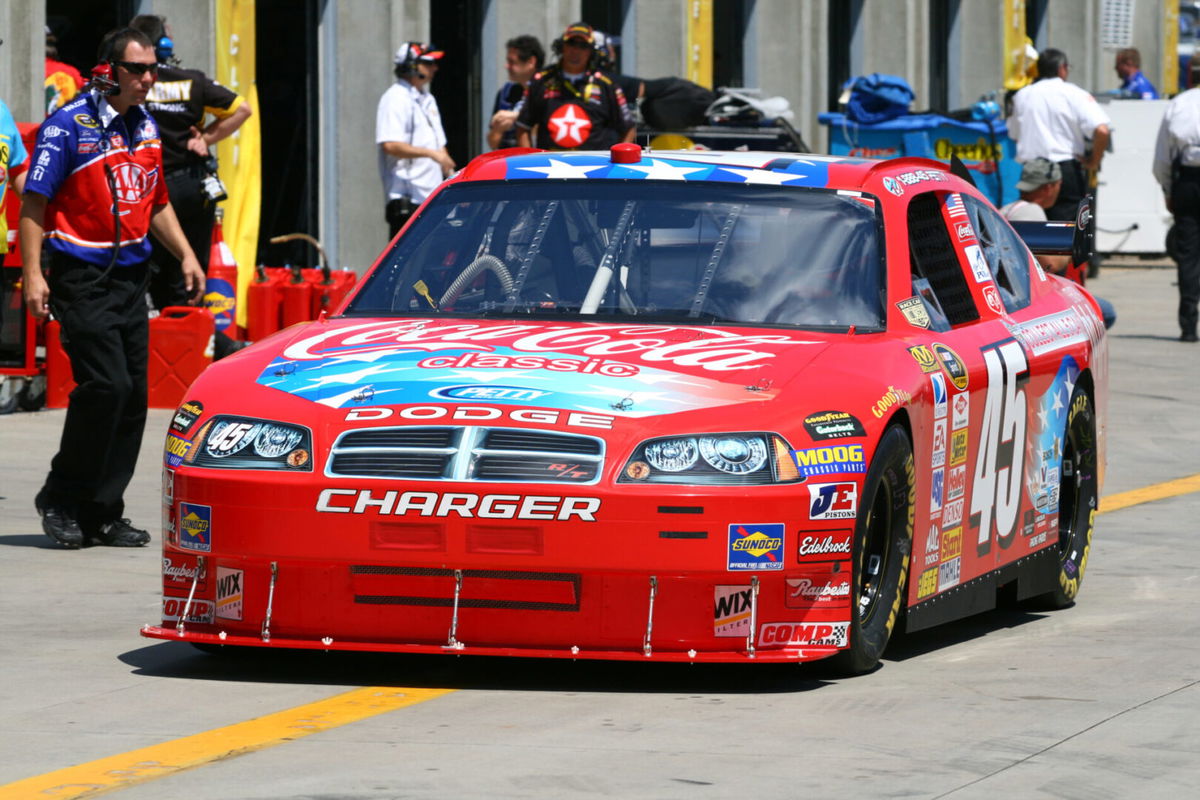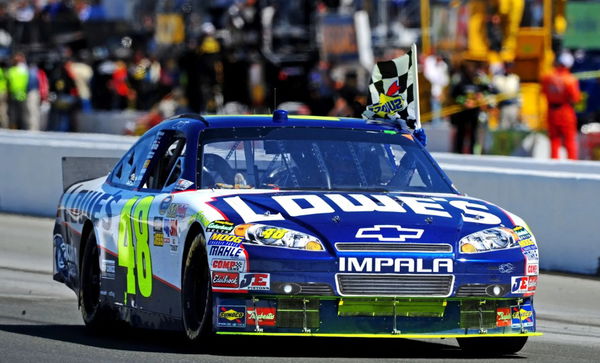
Imago
NASCAR #45 – Kyle Petty, Kyle Pettys #45 Coca Cola Dodge Car of Tomorrow heads out onto the track before the 2008 NASCAR Coca Cola 600 at Lowes Motor Speedway.

Imago
NASCAR #45 – Kyle Petty, Kyle Pettys #45 Coca Cola Dodge Car of Tomorrow heads out onto the track before the 2008 NASCAR Coca Cola 600 at Lowes Motor Speedway.
When NASCAR first rolled out the Car of Tomorrow in 2007, it was hyped as the future of stock car racing. Safer, stronger, and built to last. But ask anyone who drove it, and you’ll hear a mixed bag of memories. Fans weren’t exactly thrilled either. With its boxy look, drivers learned quickly that this wasn’t just another race car. Rather, it demanded a whole new approach. And while plenty of gripes came and went, one issue in particular still sticks out that pushed some veterans over the edge, including Dale Earnhardt Jr.
Watch What’s Trending Now!
The Car of Tomorrow’s most defining (and divisive) feature was the front splitter. For those unfamiliar, the splitter is a flat panel attached to the bottom of the car’s nose. It’s designed to improve aerodynamics by creating front-end downforce, helping the car stick to the track at high speeds. While effective in theory, it changed the way teams and drivers set up and handled their cars, and not everyone was on board.
Dale Earnhardt Jr. was one of the most vocal critics: “The part about the CoT that, um, that bothered that I didn’t love was the splitter,” he admitted, pointing to how it took away the flexibility teams once had with the car’s front valance. Before the splitter, teams could tweak and grind the valance to their liking, creating small differences in how cars traveled into corners.
ADVERTISEMENT
“One of us is going to do it better than the other, and over the course of a 500-mile race, you’re going to see some people with a little more strength than others due to hitting that just right,” Dale Jr. explained. “Everyone eventually quickly learned that you had to live in the very same spot… and so in six months’ time we’re all very similar in speed and grip.”

USA Today via Reuters
Mark J. Rebilas-USA TODAY Sports
The uniformity frustrated him because it erased the small competitive edges teams used to gain through setup creativity. To make matters worse, pushing the car harder didn’t pay off. “If I tried to drive the car one car length further… it was a very big penalty,” Dale Jr. recalled.
ADVERTISEMENT
For a driver who thrived on nuance and outsmarting the competition, the splitter wasn’t progress. Rather, it was a roadblock. It stripped away the individuality of driving styles and made races feel more about surviving within a box than pushing the limits of creativity. To Dale Jr., that shift was one of the most frustrating legacies of the CoT era.
ADVERTISEMENT
Dale Earnhardt Jr.’s tryst with the CoT
Dale Earnhardt Jr.’s career with the Car of Tomorrow (CoT), NASCAR’s Gen 5 car used from 2007 to 2012, reflects both his resilience and competitive prowess during a transitional era in the sport. While the CoT received mostly negative reviews from drivers and fans, Earnhardt Jr. managed to remain a strong contender throughout this period.
He competed in hundreds of races with the CoT, showing consistent performance with key highlights including multiple pole positions, top-five finishes, and race wins. Earnhardt led significant laps in various events, such as the 2008 LifeLock 400, where he led 14 laps to secure victory. He also set qualifying speed records and demonstrated skill at several tracks, including top finishes at Watkins Glen, Dover, Kentucky, and Talladega.
During the CoT era, Earnhardt Jr. was a fan favorite known for his smooth driving style and strategic racing. Although the car demanded different handling due to safety enhancements, like its raised roof and rear spoiler, he adapted to these changes while maintaining competitiveness.
ADVERTISEMENT
Dale Earnhardt Jr. compiled an impressive legacy with the Car of Tomorrow, balancing aggressive driving with calculated tactic execution. Across the CoT years, he earned several wins and consistently ranked among the sport’s top drivers, furthering his reputation as one of NASCAR’s premier personalities and racers during a technically evolving period in Cup racing.
ADVERTISEMENT
ADVERTISEMENT
ADVERTISEMENT

